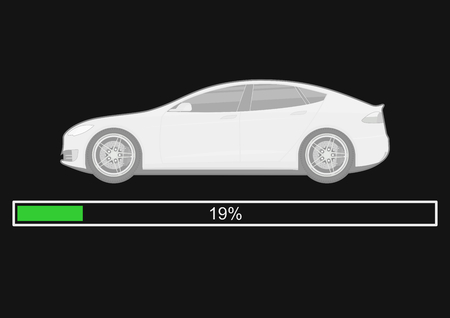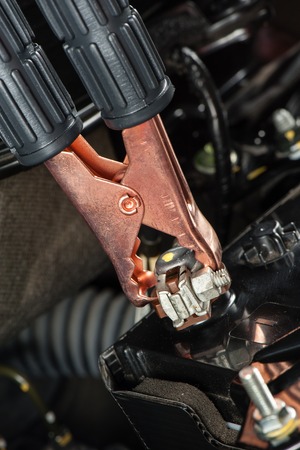1. Introduction
When it comes to vehicle exhaust systems, two common setups are straight pipe exhausts and mufflers. Both serve different purposes and impact your cars performance, sound, and legal compliance. Before deciding which setup is right for your vehicle, its important to understand what these systems do and how they differ.
What Is a Straight Pipe Exhaust?
A straight pipe exhaust system removes all restrictions from the exhaust flow. This means no mufflers, catalytic converters, or resonators—just a straight pipe running from the engine to the tailpipe. This design is popular among performance enthusiasts who want to maximize horsepower and create a loud, aggressive exhaust note.
What Is a Muffler?
A muffler is a crucial part of a vehicle’s exhaust system designed to reduce noise. It uses chambers or sound-dampening materials to minimize the loud sounds created by engine combustion. Most stock vehicles come equipped with mufflers to ensure compliance with noise regulations and to provide a quieter, more comfortable driving experience.
Comparison: Straight Pipe Exhaust vs. Muffler
| Feature | Straight Pipe Exhaust | Muffler |
|---|---|---|
| Sound | Loud, aggressive, raw engine tone | Quieter, more controlled exhaust note |
| Performance | Increases horsepower and reduces backpressure | May slightly restrict airflow, reducing performance gains |
| Legal Considerations | Often illegal in many areas due to noise and emissions regulations | Legal in most places, as it complies with noise laws |
| Cost | Can be cheaper to install but may lead to fines | Typically included in stock vehicles, replacement models vary in price |
Both straight pipe exhaust systems and mufflers have their advantages and drawbacks. The decision depends on your goals—whether you prioritize performance and sound or legal compliance and comfort. Knowing these differences will help you make an informed choice about modifying your vehicles exhaust system.
2. Straight Pipe Exhaust: Pros and Cons
A straight pipe exhaust system eliminates restrictions in the exhaust flow, allowing for better performance and a louder, more aggressive sound. However, it also comes with drawbacks, including excessive noise and potential legal issues due to emissions concerns.
Pros of a Straight Pipe Exhaust
🔧 Increased Performance
By removing the muffler and catalytic converter, a straight pipe exhaust reduces backpressure, allowing the engine to breathe more efficiently. This can result in improved horsepower and torque.
🔥 Aggressive Sound
A straight pipe system delivers a raw, high-performance exhaust note. Many performance car owners prefer this deeper, louder tone, which enhances the driving experience.
⚙️ Weight Reduction
Without a muffler and other restrictive components, a straight pipe exhaust is lighter, which can contribute to slight performance gains.
🎨 Aesthetics
Many enthusiasts install straight pipe exhausts for the look. The aggressive exit pipes complement the sporty appearance of high-performance vehicles.
Cons of a Straight Pipe Exhaust
🔊 Excessive Noise
Without a muffler, the exhaust is significantly louder, which may be irritating for passengers and pedestrians. In some areas, overly loud exhaust systems are illegal.
🌎 Increased Emissions
Removing the catalytic converter increases emissions, which can contribute to environmental concerns. In many states, vehicles must meet emissions regulations to be considered street legal.
⚖️ Legal Issues
Many regions have strict noise and emissions laws. A straight pipe system may make your car non-compliant with regulations, potentially resulting in fines or failed inspections.
💰 Expensive Modifications
If your vehicle requires additional tuning to accommodate the straight pipe setup, costs can add up. Some cars may need an ECU tune to optimize performance and prevent check engine lights.
Comparison: Straight Pipe vs. Muffler
| Feature | Straight Pipe Exhaust | Muffler System |
|---|---|---|
| Performance | Better airflow, potential horsepower gains | Less restrictive but designed for balanced performance |
| Sound | Very loud, aggressive exhaust note | Quieter, more refined |
| Weight | Lighter due to fewer components | Slightly heavier due to muffler and resonators |
| Legal Compliance | May violate noise and emissions laws | Typically street legal |
| Cost | Can be costly if tuning is required | Lower initial cost, fewer legal concerns |

3. Three, Muffler: Pros and Cons
A muffler is a key component of most standard vehicle exhaust systems. Unlike a straight pipe exhaust, which focuses purely on performance, a muffler aims to reduce noise and comply with legal regulations. Below, we’ll break down the advantages and disadvantages of using a muffler in your exhaust system.
Pros of Using a Muffler
✔ Noise Reduction
The primary function of a muffler is to reduce the sound generated by your vehicle’s engine. Without a muffler, exhaust gases exit with full force, creating loud, often disruptive noises. A muffler contains chambers and perforated tubes that dissipate sound waves, making your car quieter and more pleasant to drive.
✔ Legal Compliance
Many states in the U.S. have strict noise regulations for vehicles, and running a straight pipe exhaust might result in fines or penalties. Mufflers help ensure that your vehicle stays within legal noise limits, allowing hassle-free driving without worries about law enforcement.
✔ Reduced Emissions (When Used with a Catalytic Converter)
While a muffler itself doesn’t filter emissions, most factory exhaust systems include both a catalytic converter and a muffler. This setup ensures a cleaner exhaust output, which is better for the environment and helps vehicles comply with emissions laws.
Cons of Using a Muffler
✘ Restricted Exhaust Flow
Since a muffler uses internal chambers and baffles to control noise, it can slightly restrict the flow of exhaust gases. This restriction may reduce engine efficiency and power output, especially in high-performance vehicles.
✘ Potential Weight Increase
Mufflers add extra weight compared to a straight pipe setup. While the difference might be minimal for daily drivers, race cars and performance vehicles benefit from every pound reduced.
✘ Less Aggressive Sound
Some car enthusiasts prefer the loud, aggressive sound of a straight pipe exhaust. A muffler, by design, dampens this rumble, making the vehicle sound tamer.
Comparison: Muffler vs. Straight Pipe Exhaust
| Feature | Muffler | Straight Pipe Exhaust |
|---|---|---|
| Noise Level | Low to Moderate | Very Loud |
| Legal Compliance | Usually Legal | Often Illegal |
| Performance | Slightly Restricted | Enhanced |
| Weight | Heavier | Lighter |
While a muffler may slightly limit performance, it provides significant benefits in noise reduction and legal compliance. For those using their vehicles primarily on public roads, a muffler-equipped exhaust system is often the preferred choice.
4. Legal Considerations and Environmental Impact
Exhaust Modification Laws in the U.S.
Modifying your vehicles exhaust system is a popular way to enhance performance and sound, but it’s important to know the laws before making changes. In the U.S., exhaust regulations vary by state, and some places have strict rules regarding noise levels and emissions. In general, any modification that increases noise beyond a certain threshold or removes emissions control components, like the catalytic converter or muffler, may be illegal.
Common Exhaust Laws by State
| State | Noise Restrictions | Muffler Removal Legality | Emissions Testing Required |
|---|---|---|---|
| California | Max 95 dB (for most vehicles) | Illegal | Yes |
| Texas | Must not be louder than stock | Illegal | Varies by county |
| New York | Max 95 dB | Illegal | Yes |
| Florida | Must not be excessive | Illegal | No |
Local jurisdictions may have additional restrictions, so always check with your state’s Department of Motor Vehicles (DMV) or relevant agencies before making modifications.
Environmental Impact of Removing a Muffler
Removing a muffler not only increases noise but can also impact air quality. While the muffler itself does not control emissions, many modern exhaust systems integrate resonators and baffling that can affect the efficiency of emissions regulation. More importantly, modifications to the exhaust system sometimes lead to tampering with catalytic converters, which dramatically increases harmful emissions.
Impact Comparison: Stock vs. Straight Pipe Exhaust
| Feature | Stock Exhaust | Straight Pipe Exhaust |
|---|---|---|
| Noise Level | Moderate to quiet | Very loud |
| Emission Control | Fully compliant | May increase emissions |
| Environmental Impact | Minimal | Potentially higher pollution |
| Legal Compliance | Generally legal | Often illegal |
Because of these concerns, many states impose fines and penalties for illegal exhaust modifications. In some areas, vehicles that fail emissions or noise testing may not be allowed on public roads until brought into compliance.
5. Which Option is Right for You?
Choosing between a straight pipe exhaust and a muffler depends on several factors, including legal regulations, desired performance, and personal preference. Heres what you should consider before making a decision.
Legal Considerations
Before modifying your exhaust system, check your local laws. Many states in the U.S. have strict noise regulations, and straight pipe exhausts are often illegal for street use. Failing to comply could result in fines or your vehicle being deemed unroadworthy. On the other hand, mufflers help keep your car within legal noise limits, making them a safer choice for daily driving.
Performance Factors
If youre looking for maximum performance, a straight pipe exhaust can increase horsepower by improving exhaust flow and reducing backpressure. This is especially beneficial for high-performance or track vehicles. However, for everyday driving, a muffler provides a balance between performance and noise control. Some high-performance mufflers even enhance exhaust flow while keeping sound levels manageable.
Personal Considerations
Your choice also depends on your tolerance for noise and your driving environment. If you enjoy an aggressive exhaust note and primarily drive on tracks or off-road, a straight pipe might be appealing. However, if you want a quieter, more comfortable ride without disturbing neighbors or drawing attention from law enforcement, a muffler is the better choice.
Comparison Table
| Factor | Straight Pipe Exhaust | Muffler |
|---|---|---|
| Legal Compliance | Often illegal for street use | Generally legal |
| Performance | Maximized exhaust flow, increased horsepower | Balanced flow, moderate performance boost |
| Noise Level | Very loud, aggressive sound | Reduced noise, controlled sound level |
| Daily Driving Comfort | Less comfortable due to excessive noise | More comfortable and practical |
Ultimately, the best option depends on your specific needs. If you’re building a race car or want maximum sound and power, a straight pipe could be ideal. However, if you need a practical, street-legal vehicle with balanced performance and comfort, a muffler is the better choice.


